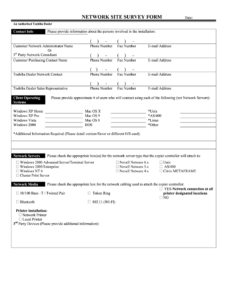Developing an effective IT risk management policy is a crucial step in safeguarding your organization’s information systems and assets. This comprehensive guide will provide you with a detailed IT risk management policy template that outlines the key elements and best practices for implementing a robust risk management framework. With a clear and well-defined policy, you can proactively identify, assess, and mitigate potential threats, ensuring the integrity and security of your IT infrastructure.
This policy template offers a structured approach to IT risk management, empowering you to make informed decisions and allocate resources efficiently. By following the guidelines and recommendations provided, you can establish a proactive and comprehensive risk management program that aligns with your organization’s specific needs and objectives.
Key Elements of an IT Risk Management Policy
An effective IT risk management policy should encompass several key elements to ensure a comprehensive approach to risk mitigation. These elements include:
- Risk Identification: This involves identifying and categorizing potential threats and vulnerabilities that may impact the confidentiality, integrity, and availability of your IT systems and data.
- Risk Assessment: Once risks are identified, they need to be assessed based on their likelihood and potential impact. This assessment helps prioritize risks and allocate resources accordingly.
- Risk Treatment: This involves developing and implementing strategies to address identified risks. Common risk treatment methods include risk avoidance, mitigation, acceptance, and transfer.
- Risk Monitoring and Review: The risk management policy should establish a process for ongoing monitoring and review of risks. This ensures that risks are continuously assessed and addressed as the IT landscape evolves.
Implementing an Effective IT Risk Management Policy
To successfully implement an IT risk management policy, several key steps need to be taken:
- Establish Clear Roles and Responsibilities: Clearly define the roles and responsibilities of individuals and teams involved in risk management. This includes assigning ownership for risk identification, assessment, and treatment.
- Conduct a Comprehensive Risk Assessment: Perform a thorough assessment of potential risks to your IT infrastructure, applications, and data. This assessment should consider internal and external factors, including cybersecurity threats, natural disasters, and human error.
- Develop and Implement Risk Treatment Strategies: Based on the risk assessment, develop and implement appropriate risk treatment strategies. This may involve implementing security controls, conducting security awareness training for employees, or acquiring cybersecurity insurance.
- Establish a Continuous Monitoring and Review Process: Implement a process for ongoing monitoring and review of risks. This involves regularly reviewing risk assessments, monitoring security logs and alerts, and conducting vulnerability assessments.
Conclusion
An effective IT risk management policy template provides a solid foundation for implementing a comprehensive risk management framework. By following the guidelines and recommendations outlined in this guide, you can establish a proactive and comprehensive approach to IT risk management, safeguarding your organization from potential threats and ensuring the integrity and security of your IT systems and data.
Regularly reviewing and updating your IT risk management policy is essential to ensure that it remains aligned with your organization’s evolving needs and the changing IT landscape. This ongoing commitment to risk management will help you stay ahead of potential threats and protect your organization from security breaches and disruptions.
FAQs on IT Risk Management Policy Template
What is the purpose of an IT risk management policy template?
An IT risk management policy template provides a structured framework for organizations to develop and implement a comprehensive risk management program. It outlines the key elements, best practices, and steps involved in effectively identifying, assessing, and mitigating IT-related risks, ensuring the security and integrity of IT systems and data.
What are the key elements of an effective IT risk management policy?
The key elements of an effective IT risk management policy include risk identification, risk assessment, risk treatment, and risk monitoring and review. These elements work together to provide a comprehensive approach to managing IT risks and ensuring the protection of IT assets and data.
How can I implement an effective IT risk management policy?
To implement an effective IT risk management policy, you should establish clear roles and responsibilities, conduct a comprehensive risk assessment, develop and implement risk treatment strategies, and establish a continuous monitoring and review process. This systematic approach will help you proactively manage IT risks and protect your organization from potential threats.

